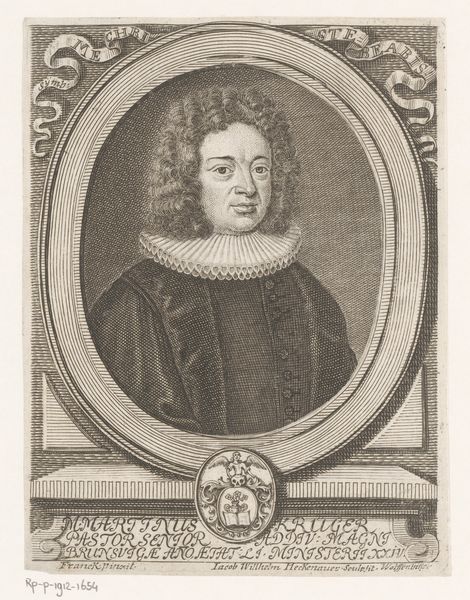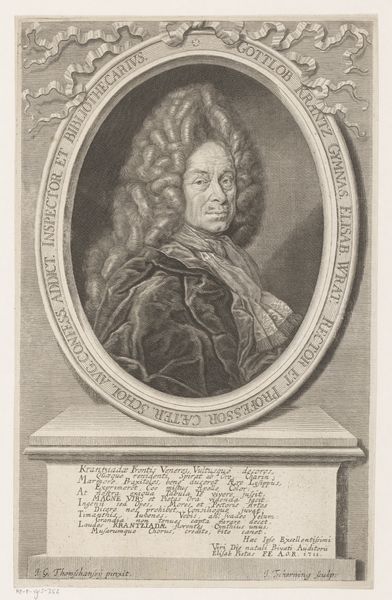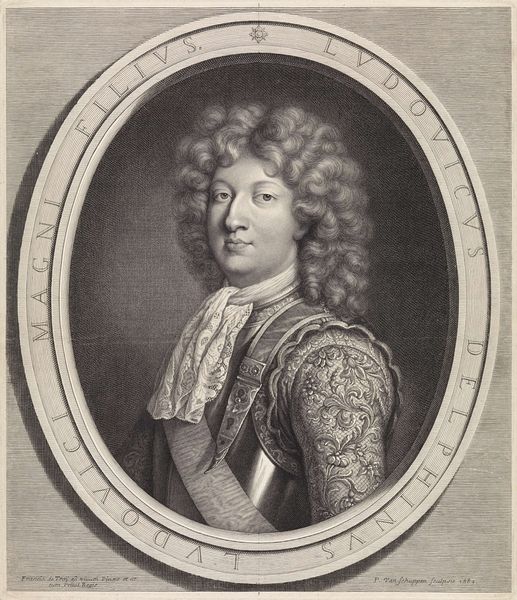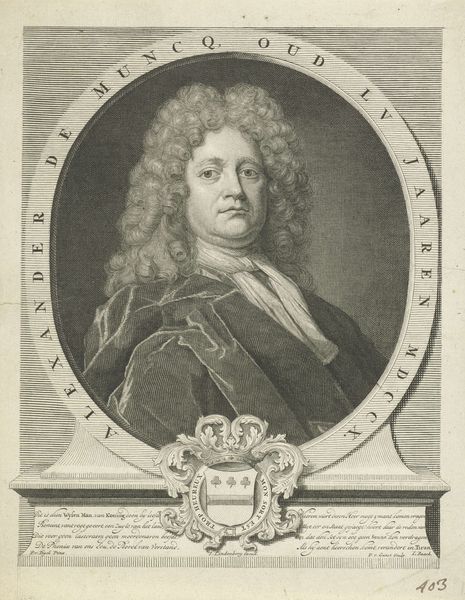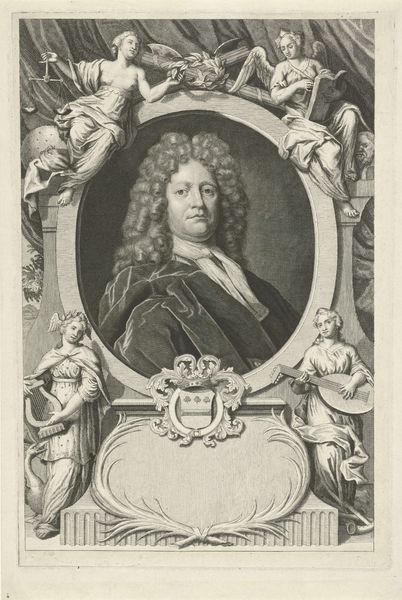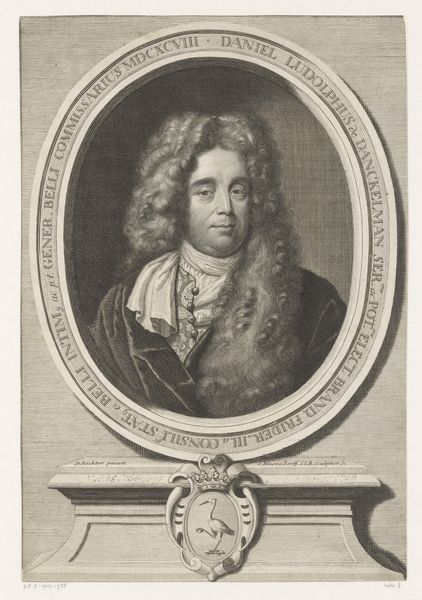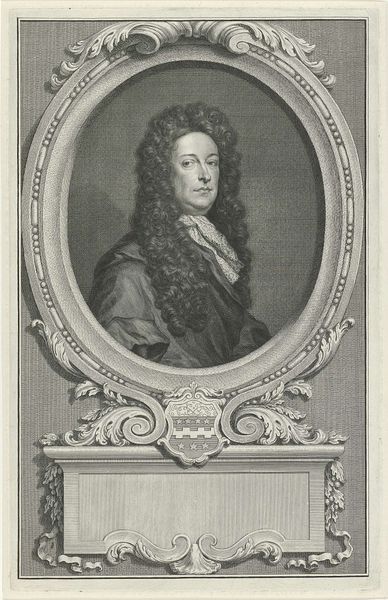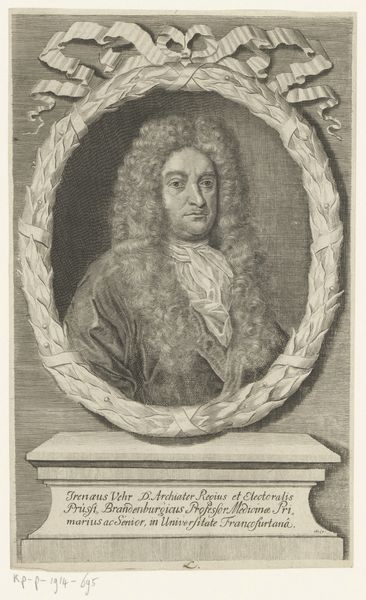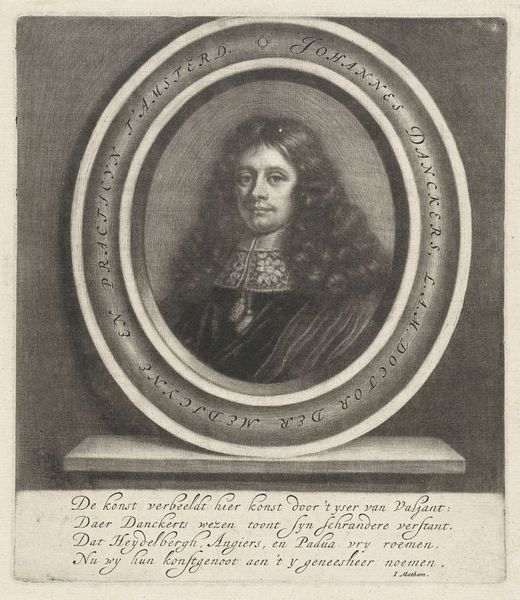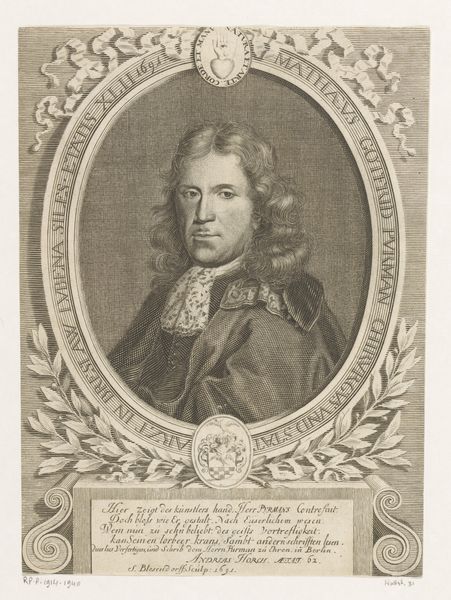
paper, engraving
#
portrait
#
baroque
#
old engraving style
#
paper
#
unrealistic statue
#
history-painting
#
engraving
Dimensions: width 151 mm, height 200 mm
Copyright: Rijks Museum: Open Domain
Curator: This engraving, made between 1704 and 1707, depicts Franz Arnold Wolff-Metternich zur Gracht. Pieter van Gunst crafted it, and it now resides here at the Rijksmuseum. Editor: My first impression is one of baroque formality—the intense wig, the oval frame, the proliferation of heraldry—all contribute to a powerful sense of hierarchical presentation. Curator: Absolutely. Consider the density of detail: the various coats of arms framing the central portrait. This visual rhetoric was a very effective means of conveying status. Look at the quality of line too; so precise, defining the planes of his face and the intricacies of his garments. Editor: True, the graphic sharpness creates a striking visual field. The clothing details also feel like social signals, all part of projecting authority, even down to the cross suspended from his neck. What was Wolff-Metternich zur Gracht’s societal position at the time? Curator: He was a Prince-Bishop of Paderborn and Osnabrück. These were powerful positions within the Holy Roman Empire, so this print likely served as both a commemorative object and a declaration of his authority. Prints like this circulated widely and were essential in disseminating the image of power. Editor: It's remarkable how this fits within the visual strategies used by elite members of the Catholic Church during the baroque period. The opulence almost distracts from the very nature of the church he's a member of! It is really so fascinating. Curator: Well, beyond any social or political factors, notice how light functions formally? Observe the areas of highlights—they give life to an otherwise quite rigid composition. It directs our attention meticulously towards Wolff-Metternich’s expression. Editor: Indeed. The artist used these graphic tonal contrasts quite intelligently. Reflecting on this piece, I see it as evidence of an era clinging to older conventions amidst great change; this reminds me about this portrait’s use for consolidating dynastic or church power using reproducible imagery. Curator: And I’m intrigued by the way a skilled hand has coaxed such expressive textures from simple engraved lines, turning functional propaganda into a rather compelling artifact.
Comments
No comments
Be the first to comment and join the conversation on the ultimate creative platform.
